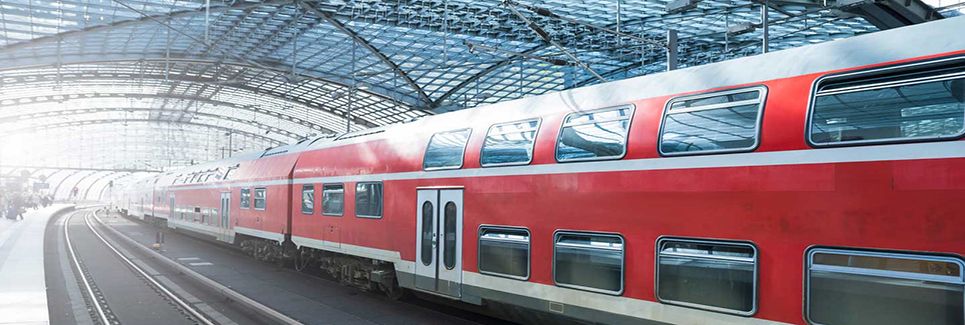
- userLoginStatus

Ground Vehicles Engineering A
Synthetic program:I parte. Con approccio di tipo multidisciplinare, sono illustrati i metodi con i quali e` opportuno impostare il progetto di un autoveicolo. Il veicolo e` definito come sistema complesso e sono illustrate sia le funzioni del sistema globale, sia dei suoi sotto-sistemi. Sono illustrate le caratteristiche di: ruote, sospensioni, sistemi di sterzatura e frenatura, trasmissioni, propulsori (cenni), casse. Tutti i temi sono trattati con particolare attenzione agli aspetti relativi alla sicurezza attiva e passiva.
II parte. Con approccio di tipo multidisciplinare, sono illustrati i metodi con i quali e` opportuno impostare il progetto di un veicolo ferroviario. Il veicolo e` definito come sistema complesso e sono illustrate sia le funzioni del sistema globale, sia dei suoi sotto-sistemi. Sono illustrate le caratteristiche di: ruote, sale, carrelli, motori (cenni), trasmissioni, casse. Tutti i temi sono trattati con particolare attenzione agli aspetti relativi alla sicurezza attiva e passiva.
Introduction. Ground locomotion in nature, invention of the wheel and hystorical development of ground vehicles. Architecture of road, off-road and rail vehicles. Paradigms for designing ground vehicles.
Conceptual design of road vehicles. Geometric dimensions and performance: maximum speed, acceleration, handling, understeering and oversteering (basics) as function of vehicle parameters, theory of handling diagrams.
Wheels and suspensions Tyre: concept design and performance both on road and off-road. Rims: construction details.
Suspensions: McPherson, trailing arm, semi-trailing arm, double wishbone, ‘multi-link’, beam axle (either live or dead).
Springs and Dampers . Torsion springs, flexural springs (leaf), pneumatic springs. motube and twintube dampers, controlled dampers.
Steering. Concept design, wheel angles , mechanical systems ( Ackermann, Jantaud), rack & pinion. Powersteering.
Braking. Partition of braking force front to rear, maximum braking power, brake force limiters and EBD, servo brake, ABS, drum and disk brake, ‘retarder’, band brake Powertrain and drivetrain. Engine charactristic suited to traction, gearboxes, clutch (single and double), hydraulic torque converter. Differentials (free, torque or speed sensitive, passive or active).
Body. Concept design of body-in-white, materials, construction types.
Lightweight. Concept: energy required to complete a NEDC (New European Driving Cycle). WLTP. Mass properties. Active, preventive and passive safety for road and off-road vehicles. Future trends for road vehicles. New architectures for autonomous (automated) and connected green vehicles, zero fatalities, lightweight and durabilty performance, alternative fuels, electric vehicles, ITS (Intelligent Trasnsport Systems).
Concept design of a rail vehicle. Gabarit, performance and payload, curve negotiation, derailment (Pochet-Nadal), rolling resistance, running into tunnels.
Wheels and track. Concept and embodiment design, materials, typical loads.
Wheelset. Concept design, embodiment design, materials, wear, resilient wheels, axleboxes: kinematics, structure, bearings.
Bogies, motor bogies. Concept design. Single motor and two-motor. Load transfer. Mechanical transmissions. Body. Concept design, typical loads, embodiment design (European and US), buffers, couplers.
Braking. Fail safe-, automatic-, continuous-, controllable brake. Pneumatic system, triple valve, rheostatic brake, electromagnetic brake (friction or eddy current). Disk brake, clasp (shoe) brake.
Diesel and diesel electric locos. Electric and hydraulic transmission.
Life cycle cost and Reliability, Availability Maintainability.
Future trends for road vehicles. New architectures, lightweight and durabilty performance (lifecycle), safety and security, ITS (Intelligent Trasnsport Systems).
Technical visits and seminars are organized (both for road and rail vehicles) to provide in-depth understaning of specific and relevant topics.
Lecture Notes
Complete course:
| Type | File name | Year |
|---|---|---|
| Handwritten notes | Parte 1 - Auto Pneumatici. Rotolamento della ruota pneumatica. Marcia su strada irregolare. Sospensioni. Progetto del veicolo in assenza di dati: analisi di stabilità e Handling Diagram. Parametri ch | 2012/2013 |
| Handwritten notes | Parte 2 - Treni Introduzione ai sistemi di trasporto a guida vincolata. Deragliamento (svio). Iscrizione e percorrenza di curva. Accelerazione non compensata. Resistenze al moto. Resistenze aggiuntive | 2012/2013 |
Divided by topic:
| Type | File name | Year |
|---|---|---|
| File not available... | ||
Other:
| Type | File name | Year |
|---|---|---|
| File not available... | ||
Exercises
Complete course:
| Type | File name | Year |
|---|---|---|
| File not available... | ||
Divided by topic:
| Type | File name | Year |
|---|---|---|
| File not available... | ||
Other:
| Type | File name | Year |
|---|---|---|
| File not available... | ||
Exams
First partial exam:
| Type | Date | |
|---|---|---|
| File not available... | ||
Second partial exam:
| Type | Date | |
|---|---|---|
| File not available... | ||
Full exam:
| Type | Date | |
|---|---|---|
| File not available... | ||
Oral exam:
| Type | Date | |
|---|---|---|
| File not available... | ||
Multiple choice test:
| Type | Date | |
|---|---|---|
| File not available... | ||
Other:
| File name | ||
|---|---|---|
| File not available... | ||
Other
Laboratory:
| File name | Year | |
|---|---|---|
| File not available... | ||
Projects:
| File name | Year | |
|---|---|---|
| File not available... | ||
Presentations:
| File name | Year | |
|---|---|---|
| File not available... | ||
Collections of notes, exercises or exams:
| File name | Year | |
|---|---|---|
| File not available... | ||
Tables:
| File name | Year | |
|---|---|---|
| File not available... | ||
Etc:
| File name | Year | |
|---|---|---|
| File not available... | ||
Live
Quick daily notes, exercises and audio recordings. Files will be approved on priority but deleted after 365 days. 2 points will be assigned by default.
Quick contents:
| File name | Date | |
|---|---|---|
| File not available... | ||







